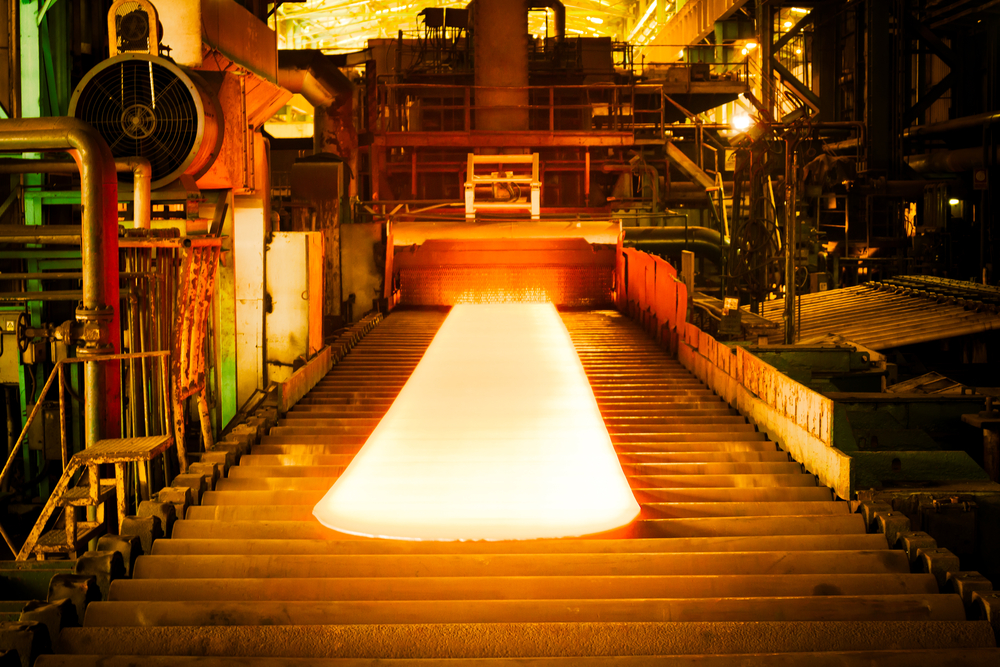Descaling Steel - Metallurgical Process

Steel is manufactured from iron ore, oxygen, carbon, and other compounds during a melting process. Once the steel is made, it will undergo further processing to create products such as structural beams, steel sheets, and other materials. When steel undergoes hot rolling, it forms a byproduct called scale along the surface. Descaling the steel is the only way to remove the scale. If the scale is not removed, it can hamper the quality of the steel and decrease the metal's integrity.
What is Descaling?
Descaling can consist of many different processes to remove scale from the surface of steel. Scale cannot be manually removed due to the strong adhesion to the steel.
Scale is an oxidation product that occurs when the steel becomes reheated in a furnace and passes multiple times through a hot roller as air cooling methods are performed. Scaling doesn't happen just one time. It will occur during the reheating phase, inter-pass phase during rolling, and during the roughing phase.
While a descaling process may occur during the primary rolling phase, the scaling will continue to form. The first instance of scaling is referred to as primary scaling that has three layers of iron oxide and is a bluish black in color. The secondary layer of scale will have a blue color.
Types of Descaling Methods
While descaling steel can consist of many different processes, there are typically 4 descaling categories: flame descaling, hydraulic descaling, chemical descaling, and mechanical descaling. The type of descaling method used will depend on your processes, the type of surface finish you want with the steel after the descaling process, your budget, and the quality of the steel.
Flame Cleaning
Flame cleaning involves using a hot oxyacetylene flame. The flame is passed across the steel at an angle, as the heat and flames blow off the scale from the surface. Once the scale is removed, the steel can proceed through other production or finishing processes. The flame has to be carefully monitored. If it is put in the wrong position, it can melt through the surface of the steel and ruin the metal piece.
Hydraulic Descaling
Hydraulic descaling involves using high pressure water from nozzles. Similar to flame cleaning, the nozzles are angled so the spray hits into the scale and knocks it off using thermal shock, pressure, and vibrations. The scale is blown off the surface without the water pressure causing damage since the nozzles are angled. The steel is moved under the sprayers as the jets of water that may contain abrasive particles take off the surface layer of steel.
Chemical Descaling
Chemical descaling involves the use of acidic solutions designed to dissolve the scale from the steel's surface. The steel undergoes a chemical bath as it is submerged into the chemicals. The scale becomes removed from all surfaces and angles. In addition to immersion processes, the chemical may also be sprayed on or use electrocleaning and ultrasonic processes.
Mechanical Descaling
Mechanical descaling is considered an environmentally responsible alternative versus using chemical descaling. It involves using a shot blast machine that shoots out a media, such as steel shot, at the surface of the steel at a high velocity. The impact of the steel shot separates the scale from the steel. The type of media that can be used may vary so long as it is dry and loose enough to strike the steel's surface.
Why is Descaling Steel and Other Metals Important?
The major problem that steel and other metals experience is corrosion. When rust forms, it can eat away the steel and make it weak, causing cracks that may cause the metal to buckle and collapse if it has to support a stress load. Scaling can increase this process as the material causes a negative reaction to the steel much like when two dissimilar metals touch.
Often the scale isn't uniform as the steel becomes more reactive to corrosion and rust where the scale and bare surface meet. So the scale must be removed. If the uneven scale coating is left in place, it can pop off the steel in pieces, causing the steel to crack. When the surface cracks, moisture can penetrate into the steel to cause rust in the form of pitting.
When it comes to descaling processes, manufacturers want to select a method that is effective in descaling steel quickly without causing additional damage. They also want a method that creates the least amount of residual waste, is safe to use, and is cost effective.
Hydraulic descaling possesses many positive benefits towards descaling steel. It is a safer method versus using chemicals or flames and will not experience excessive wearing of parts such as from mechanical descaling. When using Lechler's SCALEMASTER ECO+ technologies, the new nozzles have a rigid stainless steel design to handle the roughest industrial operations. The nozzles have an offset angle for a uniform impact distribution and strip-free descaling across the entire length of the steel. The water is sprayed evenly and at a lower pressure while still effectively removing the scale. A manufacturer can use less water and energy while still getting the desired quality results.
Another advantage to using SCALEMASTER ECO+ is that the nozzles have a patented multi-channel design. The nozzle's individual self-aligning, bolted brackets allow for a narrower nozzle spacing. They are easily replaceable when reaching their end of life, reducing maintenance costs and downtime to operations. This plug-and-play solution works for operations that employ a multitude of descaling machines in their production lines.
The SCALEMASTER ECO+ nozzles can reduce greenhouse gas emissions, eliminates wash-out effects, and provides more efficiency to operations. If you are interested in the spray nozzle technologies offered by Lechler for descaling steel and other metals, reach out to our company today.